Content marketing is a huge opportunity to grow sales.
Creating great, engaging content can help increase your traffic to your site and boost your revenue.
Why?
Customers want to feel connected. They want to feel engaged.
Strong content marketing can build this connection.
Customers who are “fully connected” are over 50% more valuable than just “highly satisfied customers.”
Wondering how to make your customers feel the connection?
It all starts with content creation.
Then, you need to get your content out there.
Finally, you need to close the loop, from content to sale.
Without great content, you’re more likely to fail
You can boost traffic and sales through content creation.
After all, 70% of your customers would rather learn about your business through an article than an advertisement.
Only one-third of e-commerce sites’ traffic is returning visitors.
The reality is that two-thirds of people who visit your site are new visitors who will never visit again.
But we know that consumers can visit up to five times before they actually buy.
Few people will jump straight from discovery to buying.
Instead, they will usually discover your website, think about your product, spend even more time thinking, maybe even forget about it, see a retargeting ad, and then buy.
The exact process may vary, but the point is that people take a lot of time to buy.
Content marketing is a great top-of-funnel strategy to grab your visitors the first time they come to your store and are still hanging out in the ‘awareness’ stage.
If you understand the way people buy, you can create content for each stage of the funnel to help move them toward buying.
Lots of people use a slightly different version of a sales funnel, but they all boil down to three basic stages:
- Awareness
- Consideration
- Decision
Each stage will require a different kind of content marketing.
It’s not enough to just create content. You need to make sure the content suits your audience.
People in the awareness stage aren’t ready to buy yet. They may not even be ready to opt-in to your email list or newsletter.
Content aimed at them that is targeting a hard sell will fail.
You can use content marketing to build brand awareness and engagement with them, moving them into the consideration phase.
Content mapping is about trying to understanding your audience well enough that you can then create appropriate content for each stage of their journey toward actually buying your product.
In a perfect world, your content marketing strategy would look like this:
The catch is that it’s not quite that simple. We all know it’s not a perfect world.
That’s why not just any content will do.
To grow your e-commerce site as much as possible, you need to know what types of content perform best.
You also need to understand how to get it out to as many potential customers as possible, and the best ways to turn it into sales.
Don’t worry. We’re about to cover all of that as well.
Create content that’s not ordinary
Internet users create a massive amount of content every single minute of every day.
Facebook has 3.3 million new posts every minute.
You can see how it can be incredibly easy to get lost amid all this noise.
The volume has become so great that the phrase ‘content shock’ has been created to capture the effect this can have on people.
Can you still successfully use content marketing in this environment?
Absolutely!
But, to succeed, you need to be able to create content that will stand out in the crowd.
How?
First, you need to come up with a content plan.
Determine what topics you will create content about, what form of content you will create and how you will put it out there.
How do you come up with content?
Think about topics that would be useful to your customers.
What is your target market?
What would your ideal shopper like?
What problems might they have, that you can help them solve?
Here are some ways you can generate content ideas:
- Listen to podcasts by people in the same niche as you.
- Check out what books are selling on Amazon that relate to your niche.
- Hang out in Facebook Groups related to your business, or start your own group!
- Ask your customers what they’d like to know more about.
According to a survey conducted by CoSchedule, people share content for the following reasons:
- To grow and nourish their personal relationships with others
- To get the word out
- For a sense of self-fulfillment and to participate in the world
- To bring value and entertainment
- To define themselves
So if you want content that people will share, then keep those things in mind.
What I’ve learned is that people generally:
- Will tag people they know if they might relate to or find interest in a piece of content.
- Appreciate being taught something new and interesting and like passing on that knowledge.
- Are likely to click and share content that relates to newsworthy topics or trending celebrities.
- Are more likely to share something that makes them laugh.
- Love to share their opinions and engage in controversy.
Your top priority should be making sure that your content will be engaging for your audience.
What types of content will engage?
Some types are shown to share better than others, with infographics being in the lead.
What about forms of content?
You can consider any of the following:
- Blogs/ articles/ text-based content
- Social media content
- Videos (including live video)
- Advertisements
- Offline content (comic books)
- E-books
- Podcasts
If you haven’t already heard, video content is becoming king.
Currently, video is the most engaging form of digital content.
That’s not likely to change anytime soon.
75% of the world’s mobile data traffic will be video by 2020.
Viral videos are an amazing way to create traffic and build engagement.
Check out Metro Trains’ Dumb Ways to Die video campaign.
They took a potentially boring topic and turned it into something so engaging it went viral.
There are other options besides creating all your own content.
You can build a ‘resource center’ or focus on content curation.
SmartInsights is a well-known example of a resource center.
They focus on a core area of expertise, along with all the sub-niches within it.
They also make everything available to subscribers in a downloadable guide, checklist, webinar or interactive tool.
For most marketers, the heart of social media marketing is content curation.
30% of marketers are still struggling to find the right content for their marketing strategy.
This is why curation is so useful. You’re pulling together other people’s content in a way that adds value to your audience.
76% of marketers share curated content on social media on a regular basis.
One form of content curation is newsjacking.
If you newsjack right, it can gain you a lot of traffic by showing up well in search results.
Another popular option is roundup posts.
These posts have many forms:
- Weekly compilations
- Lists
- Expert roundups
- ‘Top XX’ or ‘Best of’
- Content roundups
Make sure your content has a huge reach
After you pick your content type, how are you going to deliver it?
The most common choices are:
- Directly on your e-commerce site
- Through social media
- By email
Emails are a really great way to deliver any type of content.
Your email list and campaigns can drive repeat traffic back to your website by providing an incentive to return and by directly communicating on a regular basis.
According to research that the Direct Marketing Association:
- The ROI for email is 3,800%!
- 72% of people would rather receive promotions through email than social media.
- 38% of people say that receiving special offers is the main reason they opt-in to an email list.
Shopify’s email buy button also makes it simple for your customers to go straight to checkout when you email them an offer they want.
If your e-commerce business isn’t doing email marketing yet, then you’re leaving money on the table.
Want some additional ideas about what to include in your emails?
Consider using some of the following:
- Newsletters to provide the latest information on new products and other business updates.
- Drip campaigns to engage and educate customers over time, leading them to purchase.
- Special occasion emails for holidays, birthdays, and other events.
- Abandoned cart reminders to encourage customers to complete the checkout process.
- Exclusive discount offers for loyal customers.
- Trigger emails for those times when a customer takes a certain action. For example, if a customer clicks “Men’s Wear,” then a “Men’s Spring Season Discount” email is triggered to deliver two days later.
Email marketing is 40x more effective than marketing on Facebook and Twitter when it comes to generating sales.
This is because you get to take the conversation to your customer’s most personal online space: their inbox.
Facebook and Twitter are great for engagement with your community, but they’re also noisy.
Information can easily get lost on Facebook.
Your emails, however, are there waiting when your audience open their inboxes.
If you have a small marketing budget, one of the best ways to promote content is by emailing people who have shared content that is similar to yours.
This will take a lot of time, but it can be a great way to get users who have a similar audience to share your content.
If you want the best results, don’t stop at just email marketing.
Successful B2B marketers don’t just rely on emails. On average, they use 13 different tactics, only some of which are possible to deliver through email.
You’ll notice that 93% of them used social media content.
Social media may not convert as well as email but its still incredibly powerful.
Video content shared through social media may be the best combination of all.
If your videos are live, that’s even better.
Viewers watch live video three times longer than recordings.
This is a great opportunity to maximize the reach of your message.
Are you taking advantage of your Facebook Live Videos?
You can use paid Facebook Ads or influencer marketing to help spread your reach even further through social media.
When done properly, influencer marketing can create disproportionately positive results, when compared to other marketing methods.
Keep your content fresh
HubSpot has found that more blog posts a company publishes, the more traffic they receive on their website.
In their research, they discovered that companies that publish 16 or more blog posts per month receive almost 3.5X more website traffic than companies that publish less than four posts per month.
It doesn’t matter what your company size is. The more often you post, the more traffic you’ll bring to your site.
For companies with fewer than 11 employees, creating at least 11 posts per month resulted in almost three times the traffic of companies who only posted 0-1 times.
And in case you’re wondering, it doesn’t matter if you’re targeting businesses or end consumers.
Posting at least 11 times per month is still the best strategy.
It’s not just traffic that gets a boost from frequent content.
If you create at least 16 posts per month, you will get on average 4.5 times more leads than your competitors who only create four posts or less.
This impact is even more significant if you’re a small business.
Are you a small B2C business? Then the increase in leads is even larger!
The impact of frequent posting gets even larger over time.
Once you’ve hit over 400 total blog posts, you will get on average double the traffic you were getting with between 301 and 400 posts.
I know, 401 posts can sound insane if you’re just starting out.
Even more reason to get started right away, and to post frequently.
Creating 16 posts a month means it will take you two years and one month to hit the 400 mark
The length of time shouldn’t make you shy away from the goal though.
If you’re a small business, the results of more cumulative posts are even better.
Small businesses (less than 11 employees) got almost 3.5 times the traffic with at least 301 posts compared to those who had 50 posts or less.
Just like with monthly frequency, more posts over time don’t just mean more traffic. It also means more leads.
The smaller your company size, the more important it is to accumulate at least 301 posts.
Post often and post consistently, and you will see huge results in traffic, leads and sales.
Turn your content into sales
Traffic and leads are great, but ultimately you want your content marketing to help turn these into sales!
What are the best methods to turn content into sales?
First, make sure you have targeted Landing Pages for all of your campaigns or content marketing efforts.
Make sure that your landing page is well-designed to convert visitors into buyers.
Strong landing pages boost sales.
My search traffic almost tripled when I created advanced guides for SEO and several other Internet marketing topics.
Each of those advanced guides has its own separate landing page.
Make sure that you target your ‘hard-sell’ content to customers who are at the ready-to-buy phase of the funnel.
This is the time when you have to successfully target those people in your audience who are ready to buy.
You can use tools like Facebook Ads to make sure you’re directing this message to the right subset of your potential customers.
Segment customers based on their personas to make the most of your marketing efforts.
A buyer persona is a fully fleshed-out profile of one segment of your audience. In this case, that segment includes the fact that they’re ready to buy.
Not everyone will make it through the sales funnel, without escaping through a side hole.
Remarketing can bring them back in, and lead them to the sale.
Use remarketing campaigns by targeting cart abandonment to boost your sales even further.
Almost 70% of visitors who get as far as adding an item to their cart will abandon it before checking out.
That’s a huge pool of potential sales that you shouldn’t be ignoring.
The great news is that you already know these people considered buying your product.
People who abandon their carts may only need a small nudge to complete their order.
Create an ad asking them if they’ve forgotten to buy your item may be the little nudge that was all they needed.
Make sure you design the ad to include a picture of the item and link it to the product so they can finish the order easily.
You’ll notice in this Red Balloon ad that they take it even further by including a discount offer.
Paid social media ads can be used at any stage of the sales funnel:
When targeting ready-to-buy consumers, make sure you always include a call to action (CTA).
Using a CTA button can lift click-through rates by 2.85 times.
Why?
People simply seem to respond favorably to CTA buttons.
Facebook offers nine different calls to action that you can build into one of their ads:
Make sure that you choose one that is relevant to your brand, goal, and ad campaign.
AdEspresso ran a Facebook Ad experiment where they tested three different calls to action:
“Download Now,” ”Sign Up,“ and “Learn More” in an ad designed to get people to download an e-book.
The “Download” CTA outperformed the “Learn More” CTA by 50.6% and the “Sign Up” CTA by 40.4% when comparing the cost per lead.
This shows that you shouldn’t just pick a single CTA, especially if you want to drive leads through retargeting or other ads.
Test out different ones and see which one performs the best.
Don’t forget to use content marketing to upsell to your current customers.
Upselling isn’t the only way to boost sales to current customers.
You can also cross-sell them other, similar or complementary products.
You’ll notice that in order to magnify cross-selling results, Shopify recommends using urgency and deep discounts in your content marketing.
You need your audience to feel like if they don’t grab the sale now, they’re going to miss out.
Example messages that convey urgency are:
- Limited time only
- Going fast
- 24 hours only
- Limited edition
- While quantities last
The ‘deep discount’ has to be a significant enough savings that your audience sees it as being too expensive to pass up.
Of course, this is easier to do on high price, high margin products.
However, it can work for anything.
“$0.88?! I just saw this chocolate bar for $1.50 in aisle seven!”
There are tons of tactics for exploding your Shopify store sales using content marketing.
Content marketing is such a huge area of opportunity that I can’t possibly fit everything into one article.
It’s one of the reasons why I created an advanced guide to content marketing.
Conclusion
You know that you need to create high-quality content to boost your traffic, leads, and sales.
Now you know the content needs to be high-quality, captivating and shareable for best results.
You also know you need to create it constantly. At least 16 times per month.
The more content you create regularly, and over time, the better your e-commerce site will perform.
Using multiple channels and formats will get your content out to your ideal target audiences
Finally, turn content into sales for consumers who have reached the ready-to-buy stage of the sales funnel.
You should have a solid strategy for which types of content you will create and which platforms you will post it on.
Take all of this to help you increase the reach of your content and drive more traffic to your e-commerce store.
Then watch your sales explode.
What types of content have led to your Shopify store’s growth?


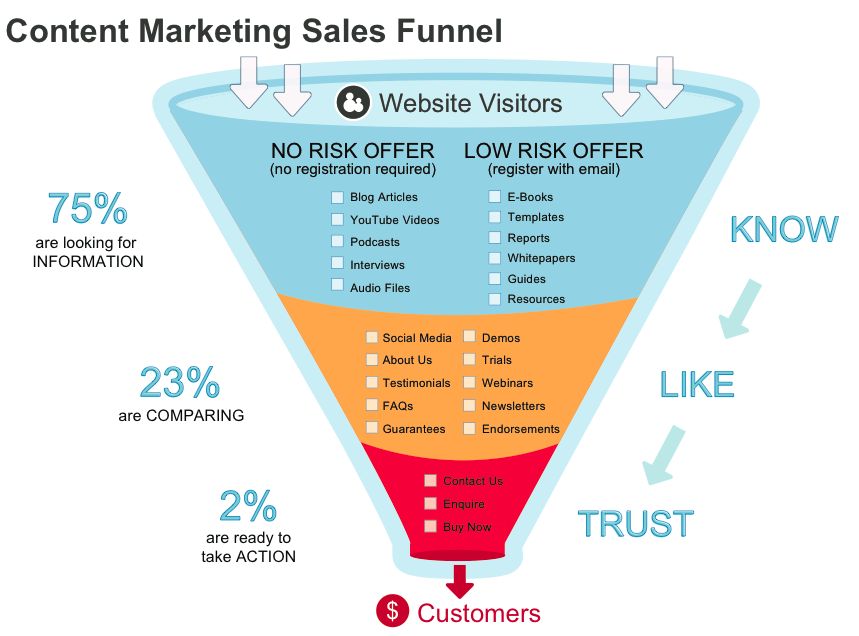




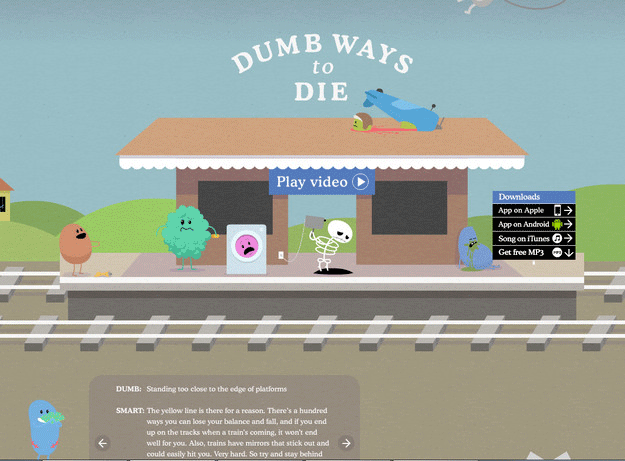







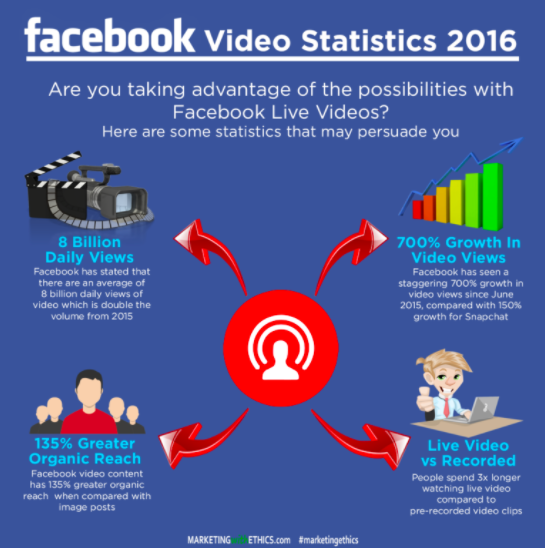











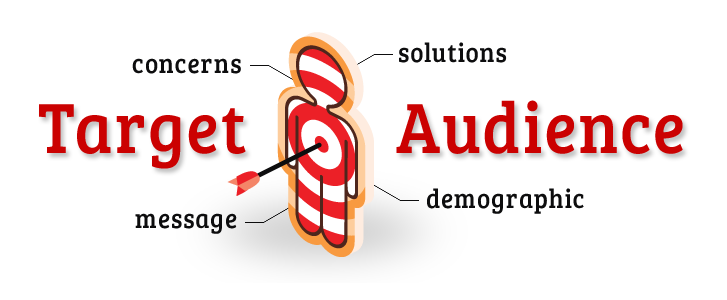




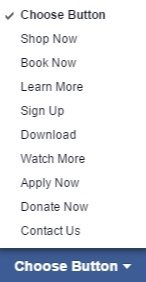

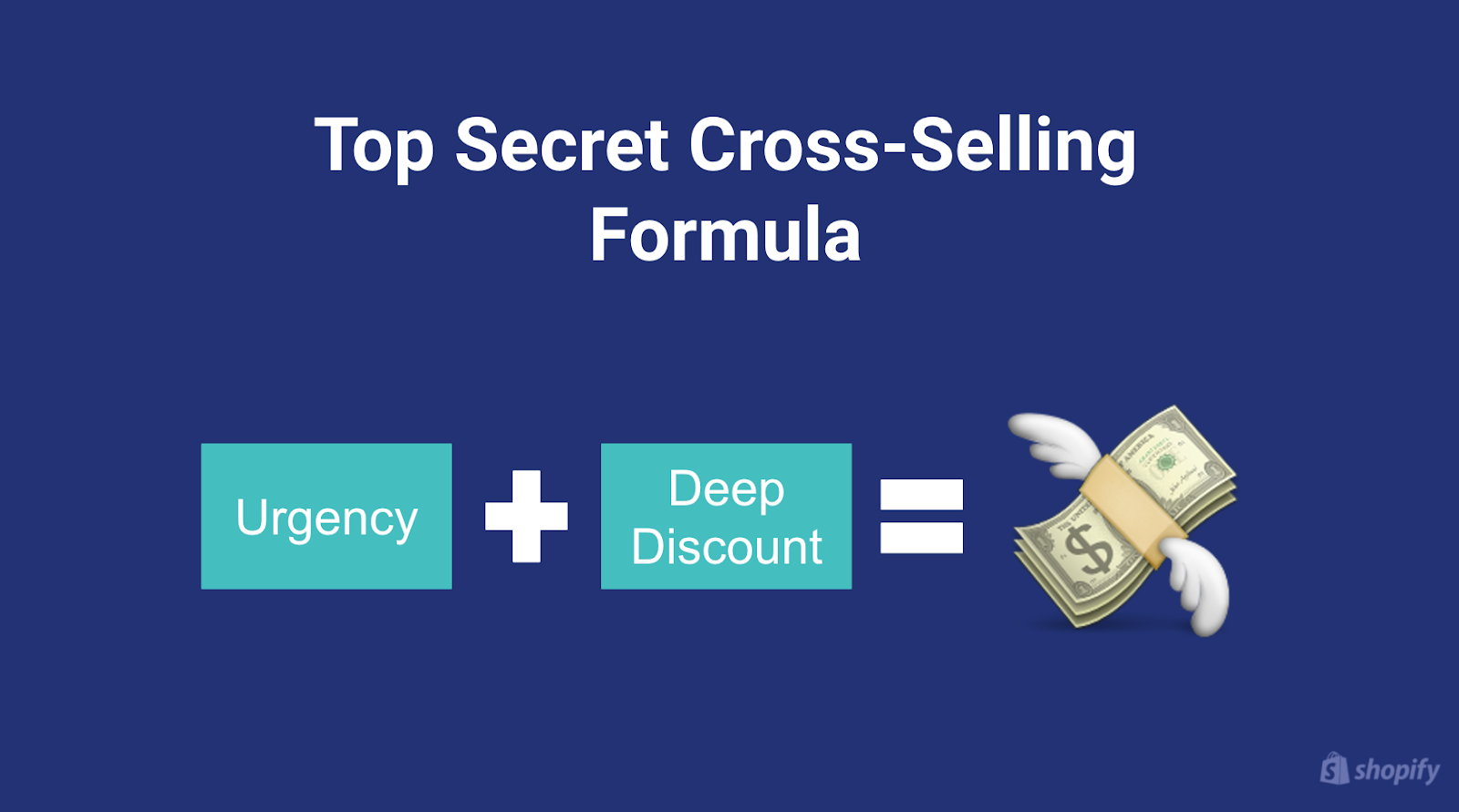
Comments (12)